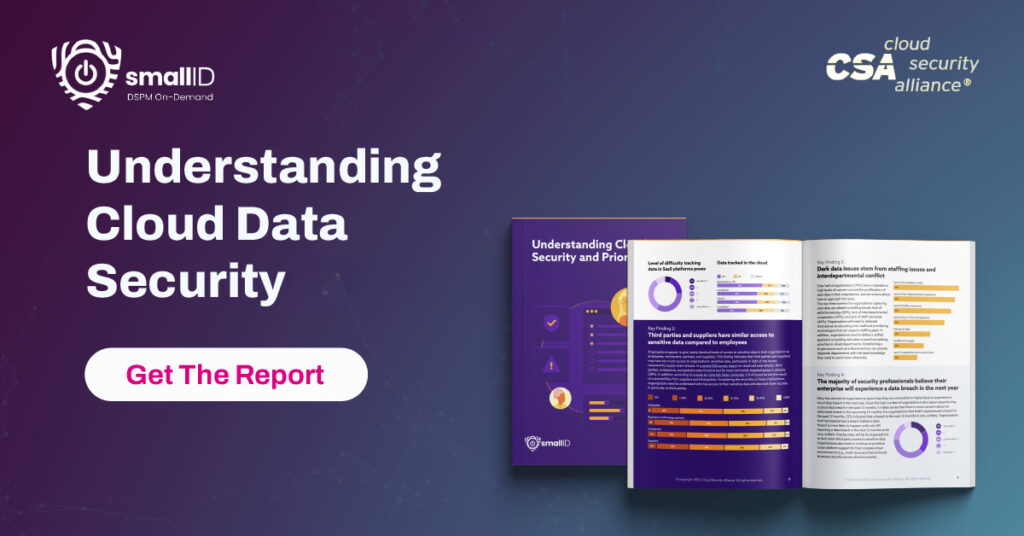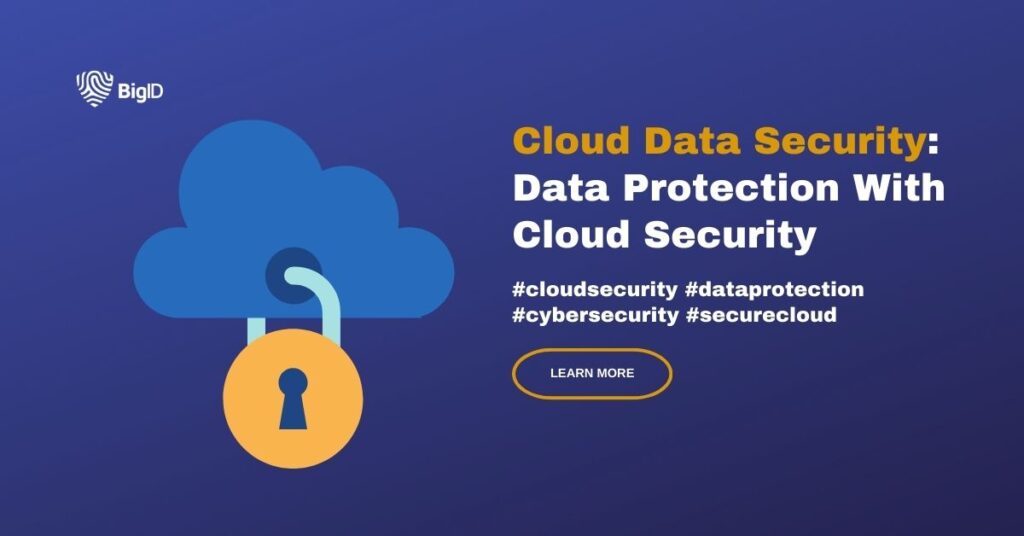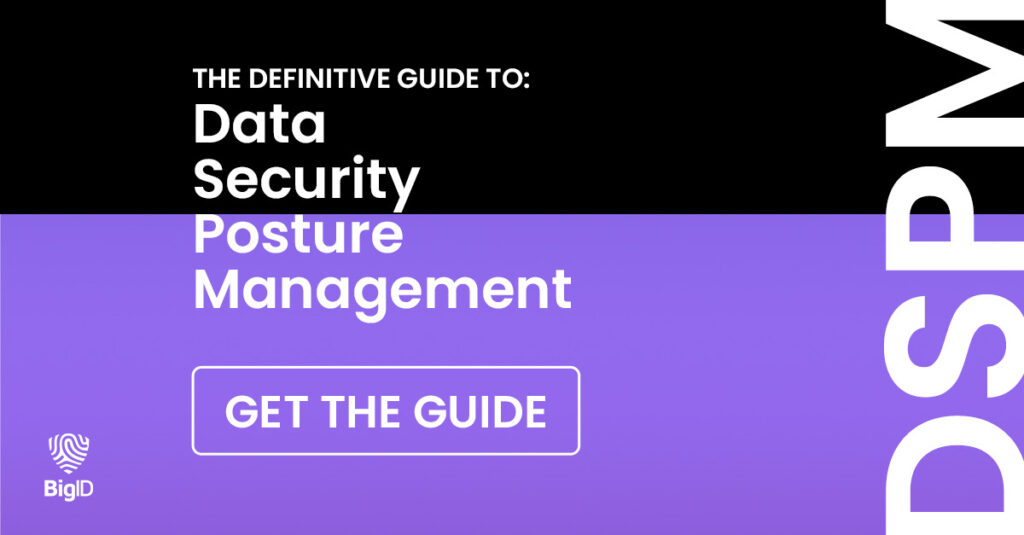Cloud Data Protection: Security Solution For Data Stored in the Cloud
The cloud offers several advantages for modern data storage and processing. That’s why nearly 94% of large businesses report using the cloud in some form. As such, ensuring robust cloud data security has become very important. In this comprehensive guide, we discuss why protecting your cloud storage is necessary and how to implement a comprehensive cloud data security strategy.
What is Cloud Security?
A cloud is a server that’s not on your premises. It’s owned and maintained by someone else. You can “rent” the space to store your data, saving you infrastructure and technical expertise costs. The stored data must be secured anyway, because it’s always at risk of breaches. However, now you have the added risk during data transfer.
The environment is different, and so are the threats. That means, to protect data in the cloud, you need security policies and tools designed specifically for this purpose. That’s cloud data security.
Cloud data security refers to the set of policies, technologies, and controls designed to safeguard data, applications, and infrastructure in cloud environments. They help maintain data confidentiality, integrity, and availability.
Data security in cloud computing uses a complex framework crafted specifically for the cloud ecosystem. It offers the protection needed to ensure data confidentiality, integrity, and availability for a secure and resilient cloud infrastructure.
Cloud Security Challenges
As we mentioned before, securing the cloud infrastructure presents its own set of challenges, especially across hybrid cloud environments. Some of the most common include:
- Data Breaches: One of the primary challenges is the persistent threat of data breaches. As data becomes more distributed across cloud environments, the attack surface widens. That makes it an attractive target for threat actors. If your organization operates in the cloud, it must understand and mitigate the risks associated with unauthorized access to sensitive data.
- Compliance Issues: Data protection regulations and standards are always changing. Your business must comply with legal requirements and industry-specific regulations, or risk facing legal repercussions and reputational damage.
- Visibility and Control: Decentralized data means visibility and control over sensitive information in the cloud is difficult. You need robust monitoring mechanisms to track data movement, user access, insider threats, and unauthorized activities across all data centers.
- Shared Responsibility Model: Securing cloud data operates on a shared responsibility model. That means both cloud service providers (CSP) and you have distinct data and application security responsibilities. You need to know what security measures the cloud provider offers for its customers data and what you’re responsible for. Failure to comprehend and fulfill these responsibilities can lead to gaps in security coverage.
Cloud Security Types
Data in the cloud requires specific types of security practices against security threats. In this segment, we will explore the four primary types: data security, network security, application security, and infrastructure security. Understanding these pillars helps you design a comprehensive strategy to secure your cloud ecosystem.
Data Security
Data security protects sensitive information from unauthorized access, disclosure, alteration, or destruction. Data encryption plays a pivotal role by transforming data into an unreadable format to ensure confidentiality. Access controls and data classification are also essential to a strong security posture. They enable you to manage who can access your data based on user roles and sensitivity, which is essential for data loss prevention.
Network Security
These tools monitor and control traffic, detect potential threats, and protect data in transit. They secure the communication channels and network infrastructure within the cloud environment. Key components include firewalls, intrusion detection and prevention systems, and virtual private networks (VPNs).
Application Security
Software and applications deployed in the cloud must be secured to prevent vulnerabilities and mitigate the risk of exploitation. Regular security assessments, code reviews, and the implementation of secure coding practices are essential to keeping applications secure. Web application firewalls (WAFs) provide an additional layer of defense, monitoring and filtering HTTP traffic between web applications and the internet.
Infrastructure Security
The cloud environment is made up of hardware and software resources, and protecting this infrastructure requires its own set of security protocols. The critical components are virtualization, hypervisor, and configuration management. Secure configurations ensure that servers, databases, and other infrastructure components are properly configured to minimize vulnerabilities.

Cloud Data Security Benefits
Stay Compliant With Regulations
Cloud data security makes it easier to meet the requirements of frameworks like GDPR, HIPAA, and CCPA. With the right safeguards in place, you can prove accountability and reduce the risk of costly fines or reputational damage.
Build Customer Trust
Customers, partners, and investors want to know their data is safe. Strong security practices show you take that responsibility seriously, which builds confidence and strengthens long-term relationships.
Keep Operations Resilient
Breaches and outages don’t just cost money; they also disrupt your business. A well-designed security approach helps keep systems running, even when threats appear, by spotting and containing issues early.
Control Costs More Effectively
Security reduces the financial impact of breaches and downtime, but it also helps cut unnecessary expenses. For example, identifying and cleaning up redundant or outdated data lowers storage costs and simplifies your environment.
Scale Without Worry
One of the big advantages of the cloud is flexibility. Security that scales with your workloads lets you take full advantage of that. It allows you to grow and adapt without exposing yourself to unnecessary risk.
Gain Better Visibility Into Data
Good security helps you understand what you have, where it lives, and how it’s being used. That visibility makes it easier to protect sensitive information and unlock value from the rest.
Cloud Data Security Strategy: Securing Data in the Cloud
Keeping data secure within cloud environments needs a multifaceted approach. You need to encrypt data to make it unreadable during transit and at rest. You must also implement granular policies and adhere to the principle of least privilege to regulate data access.
Data classification strategically categorizes data based on sensitivity, so that you can enable tailored measures. Continuous monitoring and auditing ensure vigilance, with real-time surveillance and retrospective assessments identifying and addressing potential threats promptly. Cloud security posture management (CSPM), combined with data security posture management (DSPM), helps you continuously evaluate and enhance the security framework for a proactive approach to emerging threats.
This layered approach that uses encryption, access controls, data classification, and continuous monitoring is essential to maintain the resilience and integrity of cloud data security.
On-Premise vs. Cloud Security
On-Premise Security
On-premise data means your organization has direct physical control over your infrastructure—servers, network devices, and data storage systems—which you don’t get with public cloud environments. This provides a greater sense of security for sensitive assets and the flexibility to tailor security strategies to specific requirements. You are free to implement your own unique protocols, configurations, and security layers.
However, establishing and maintaining on-premise infrastructure requires a significant upfront capital investment, making it costly. The scalability of on-premise solutions is limited, and often involves a time-consuming and expensive process, especially if you have dynamic or fluctuating workloads.
Cloud Security
The public cloud offers greater scalability, allowing you to adjust resources based on demand. This flexibility is especially advantageous if you have variable workloads. Most cloud services operate on a pay-as-you-go model. You don’t need to make substantial upfront investments, which makes it cost-efficient and predictable. CSPs assume responsibility for infrastructure maintenance, updates, and security of the cloud resources, offloading the burden of day-to-day management from your organization.
However, you now depend on the reliability and security measures implemented by CSPs. You can’t be sure about the integrity of the physical location of data and dismiss the potential risks associated with remote storage. Industries with stringent compliance requirements may also face challenges in ensuring that services on the cloud align with specific regulations.
Principles That Help Protect Sensitive Data in the Cloud
In the past, it was assumed that entities within the network perimeter could be trusted, while those outside couldn’t. Zero Trust challenges this assumption. This approach emphasizes continuous verification and strict access controls. Its key principles include least privilege access, micro-segmentation, continuous monitoring, multi-factor authentication (MFA), and dynamic policy enforcement.
Least privilege access limits unauthorized access to data by restricting users to only the information they need to complete their job roles. Micro-segmentation isolates workloads and applications to reduce security risks. Continuous monitoring ensures trust is never assumed, and any deviation triggers alerts so the security incident can be contained immediately. Implementing MFA adds an additional layer of security, and dynamic policy enforcement adapts to the evolving threat landscape.
GDPR compliance is also especially important. You must adopt a risk-based approach to protect sensitive data to comply with these regulations. You need both technical and organizational controls to safeguard personal data against unauthorized access, disclosure, loss, or use.
Formulating a compliance program for secure cloud operations necessitates a foundational understanding of the seven GDPR principles:
- Encompassing lawful, fair, and transparent data processing;
- Purpose limitation;
- Data minimization;
- Accuracy;
- Storage limitation;
- Integrity and confidentiality (the security principle);
- Accountability.
These principles help you meet GDPR requirements from the outset of data processing activities and throughout the entire data lifecycle to foster transparency, responsible data practices, and robust data privacy measures.
Cloud Data Security Best Practices
Clarity in Security Responsibilities:
In the Shared Responsibility Model, CSPs and clients have distinct security roles. Understand the boundaries between your and CSP responsibilities to avoid security gaps and vulnerabilities. CSPs handle infrastructure security, while your security teams are responsible for securing data on apps, including the utilization of provided security tools.
Caution in Commissioning New Cloud Services
Evaluate new cloud services based on security criteria during the planning stage. Consider factors such as the CSP’s security track record, transparency in compliance audits, physical security controls, and responsiveness to security concerns. Assess the provider’s post-incident recovery plan, encryption options, and assistance with access management.
Utilizing Cloud Security Frameworks and Standards
Simplify the creation of cloud policies by adopting established security frameworks like NIST and ISO. These frameworks offer industry recommendations for threat management, audits, security requirements, and regulatory compliance goals. Leverage them to guide decisions on applications and providers while ensuring alignment with best practices.
Planning for Decommissioning CSPs
Consider the entire lifecycle of a CSP when building cloud deployments. Audit the decommissioning process to ensure secure data transition when services become unavailable, particularly in third-party cloud systems. Plan for provider transitions to facilitate a smooth off-boarding process.
Implementing Access Management Controls
Prioritize access management as a critical client-side cloud security task. Utilize Cloud Identity and Access Management (CIAM) systems for creating user groups and assigning role-based privileges. Follow the “principle of least privilege” to restrict access to necessary assets and implement 2-factor authentication for enhanced security.
BigID’s Approach to Cloud Workload Protection
BigID is the industry-leading platform for data security in the cloud, privacy, and governance. It leverages advanced AI and machine learning for comprehensive visibility and control.
Some of the ways BigID can help:
- Know your data: Automatically and accurately scan all your enterprise data across the multi and hybrid cloud, identify and classify by content, type and much more. Whether unstructured or structured—BigID gives you a holistic view of your entire data ecosystem.
- Reduce risk: Minimize your attack surface by deleting ROT data at scale with the Data Deletion app. Improve your risk posture and decrease your storage costs in the cloud by eliminating unnecessary data.
- Manage access: Revoke overprivileged users and set policies that streamline adherence to regulations between data source owners.
- Proactive remediation: Delegate decisions to the right people, and make better data-driven decisions. Assign findings and tasks to the right data owners, take action on the right data, and maintain an audit trail of all remediation activity.
To see how our cloud security solution can help your organization better protect your sensitive data in the cloud— book a 1:1 demo with our security experts today.



